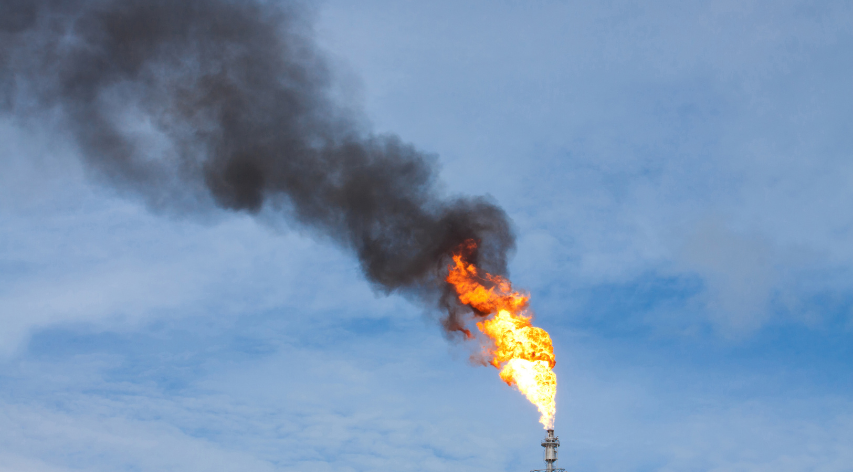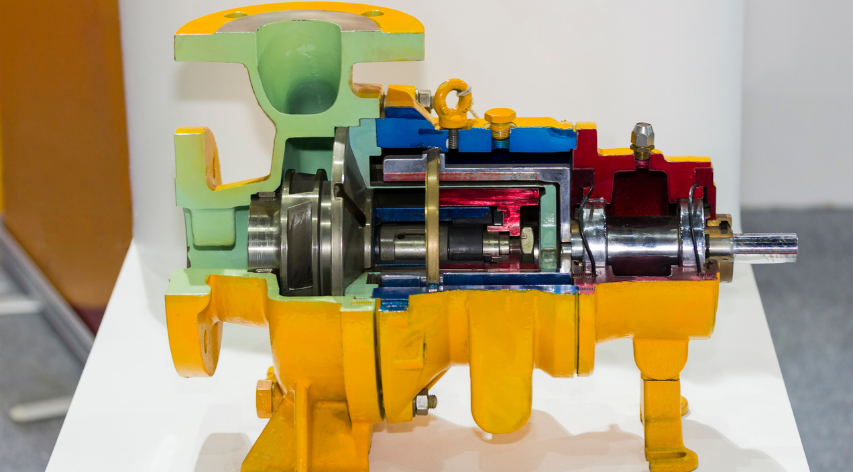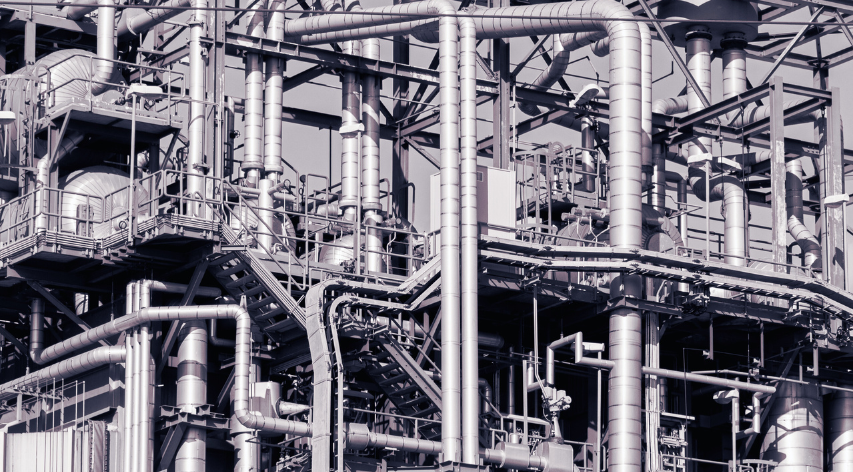When Flares Fail: Design Oversights and Lessons from the Field

By Monika Ko with contributions from Patrick Williams
Flares are designed to be the last line of defense – a critical safety system that quietly burns off excess hydrocarbons and prevents overpressure scenarios from becoming catastrophic events. Yet flare failures do, and can, happen, and are occurring more often than many expect. Not in explosive incidents, but in subtle, chronic ways: warped walls, melted tips, failing pilots, and rising emissions.
What’s particularly concerning is that many of these issues arise not during maximum design flaring, but under normal operating conditions: sometimes even less than 20% of the system’s rated capacity.
Both elevated and ground flare systems are affected, with ground flares being the largest source of downtime. The common thread: design oversights, incomplete assumptions, and operational realities that weren’t fully anticipated.
A System Too Often Treated as Secondary
Despite their critical function, flare systems are often treated as peripheral in plant design, with little consideration of their real importance. If there were a “social ranking” of plant units, a couple of “money-maker” process units are usually at the top, followed by other process units, auxiliary units, and finally utilities and especially flares at the bottom. The flare is treated as a “necessary cost” and designed to meet codes and standards that don’t always address all the details that can make it robust or vulnerable.
Becht has supported flare system reviews and troubleshooting across multiple installations and industries. While designs vary – from elevated flares to enclosed ground flares and horizontally fired open burn pits – we’re seeing repeat issues:
- Flare burner tips failing prematurely due to dissimilar welds (such as 310 stainless steel to carbon steel), a cost reduction option that doesn’t pay
- Knockout drums experiencing high corrosion rates or cracking from unsuitable materials for the service
- Poor combustion stability, especially in staged or multi-point ground flares
- Afterburning and internal heat accumulation inside ground flare enclosures
- Inadequate thermal analysis, leading to damaging heat fluxes and enclosure failures
- Providing a design flow rate without consideration of the expected duration of the flaring event
These aren’t one-off mistakes. They’re systemic issues that have become more frequent for multiple reasons:
- Late scope definition: The flare is usually the last item to be sized and designed, often when the project is running out of budget. Existing flare designs aren’t always checked rigorously as minor revamps add capacity and containments to the system.
- Project budget constraints: As the project budget is squeezed, there is pressure to save somewhere, and their details delegated. In many cases, the flare package is awarded under cost-driven procurement models in a highly competitive market. As a result, too many flare systems are under-engineered, under-reviewed, and – being the last item on the project team’s mind – end up underperforming in the field.
“The flare is like a shoe: it must be fit for purpose in all aspects to endure the harsh environment in which it is intended to operate. Too small, too big, or cheaply made will not work as the customer expects.”

- Fabrication defects: The flare business is a highly competitive, with a few major players striving to secure the next contract, often under significant cost pressure. To remain competitive, many flare systems are engineered and/or fabricated in lower-cost facilities, often resourcing to lower-cost providers who themselves compete against peer fabricators and foundries. This frequently leads to reduced quality assurance oversight, resulting in an increased incidence of fabrication related defects (e.g., poor penetration, improper welding of dissimilar metals, and defective castings).
- Talent retention challenges: Talent retention post-2020 has been a significant issue across all business, including flare manufacturers, where significant loss of senior expertise is expected to continue eroding the design Quality Assurance (QA) in all sectors.
- Lack of operating guidance and training in sites that don’t have robust internal standards and proper basic flare operating procedures (especially around the steam injection philosophy) has also led to accelerated damage of flare burners as well as scenarios that can result in burning rain from the flare (or worse) and other unwanted events.
The Knowledge Gap
The flare system market is highly competitive, with just a few major vendors. As experienced personnel retire or move on, some of the nuanced knowledge – on materials, combustion behaviour, or staging logic – is disappearing from the design and construction phase.
In many cases, flare enclosures or stacks are handed off to general fabricators or civil contractors, with little integration between thermal modelling, materials engineering, and combustion dynamics. The result: systems that meet paper requirements but underperform, or even fail, under moderate flaring scenarios.
Heat damage is cumulative. It depends on the thermal dosage absorbed by the flare components. Therefore, a flare that is adequate for a few minutes of flaring at full design capacity is inadequate for days of flaring at much lower rates.
The Real Cost of Flare Failure
When a flare system is unavailable, the implications are more than technical. Plants may face:
- Flaring restrictions, leading to production slowdowns
- Emergency rental of portable flares (if available)
- Shutdown delays or restart constraints
- Long lead times for replacement parts
- Regulatory or environmental penalties
Worse still, repairs inside flare enclosures are often impossible without a full or partial shutdown. The operational and opportunity cost can escalate quickly.
Flare unavailability can also compromise other units, such as acid gas removal systems or units handling volatile inventory, where safe depressurization or emergency venting is contingent on flare availability.
What Can Be Done
We believe flare systems deserve greater scrutiny at every stage – from FEED through operation. That means that as an owners’ technical advisor, Becht can assist clients with making the right decisions in terms of flare system choice and design, including:
- Conducting structured Process Hazard Analyses (PHAs) using HAZOP methodology, which increasingly reveal overlooked scenarios where liquid relief may flash to temperatures below the Minimum Allowable Temperature (MAT) of the knockout drum or piping – potentially resulting in brittle fracture or cracked welds
- Reviewing material selections with actual thermal profiles and long-duration event exposure in mind
- Validating knockout drum and flare tip metallurgy against cyclic load, erosion and corrosion, including MAT for piping and knockout drums to avoid cold brittle fracture
- Assessing combustion stability in both elevated and ground systems under real gas mix
- Modelling heat load and radiation exposure of flare components, including ground flares (e.g., separation distance between burners, runners, and wind fences or walls)
- Evaluating staging logic in Multi-Point Ground Flares
- Incorporating diagnostics for flame quality, tip temperature, and pilot reliability
- Performing Root Cause Failure Analysis (RCFA) to uncover design, fabrication, or operational drivers of past failures
- Supporting on-site and remote troubleshooting for underperforming flare systems, including tip degradation, KO drum corrosion, or enclosure damage
A safe flare is the product of multidisciplinary integration: materials, combustion, operations, maintenance, and reliability working together.
Conclusion: Be Curious Before It Fails
If your flare tip is degrading early, your KO drum is corroding, or your enclosure is warping or cracking, it might be time to ask deeper questions. Not just “What failed?”, but “What assumptions led us here?”
Becht, with a combined experience of over 120 years in flare system design as well as troubleshooting design and operational problems, is your best aid to quickly resolve complex flare design and operational issues, or help avoid them. Whether it’s a review, a retrofit, or just a second opinion, Becht can help flare systems perform the way they were always meant to – a peace of mind for operating companies and surrounding communities.
Like what you just read? Join our email list for more expert insights and industry updates.






